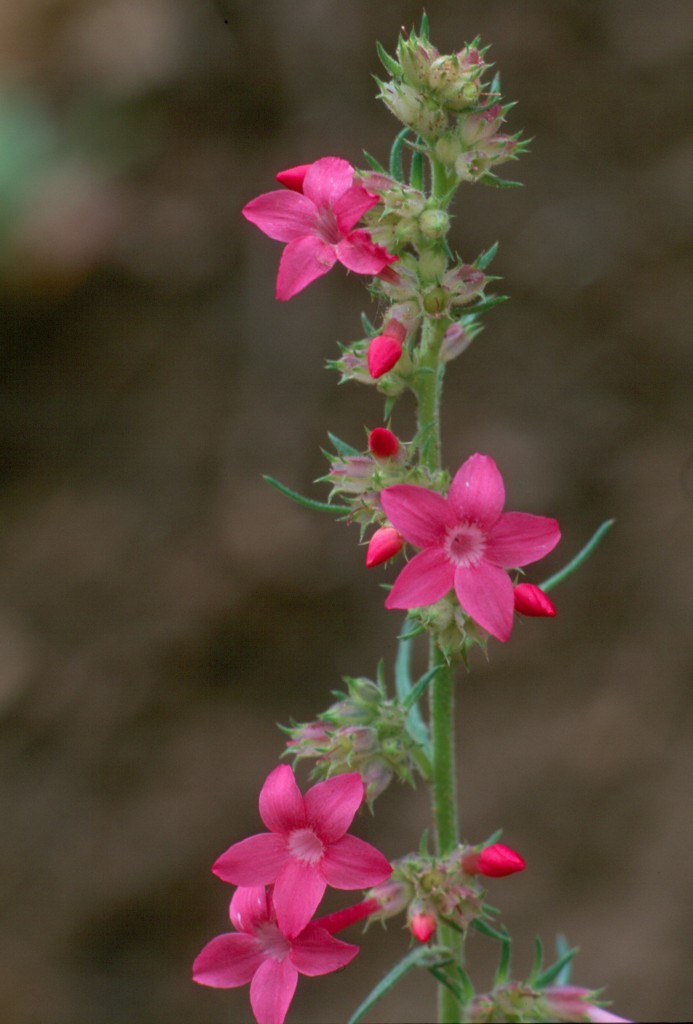Holy Ghost Ipomopsis (Ipomopsis sancti-spiritus) – a 2012 update (by Jim McGrath)
On July 29, 2012 I joined state Division of Forestry botanist Daniela Roth, former state Division of Forestry botanist Bob Sivinski, UNM rare plant botanist Phil Tonne and 3 others at 2 sites of the 2011 Holy Ghost ipomopsis plantings in Holy Ghost Canyon adjacent to the Pecos Wilderness. These plantings are part of the recovery program for this federally listed endangered species. I can report that our half day visit clearly indicated that the plantings we made in 2011 were doing quite well. The majority of the plantings were in flower at the time of our visit. Our purpose on this visit was to prepare a seedbed for certain portions of the plantings. As part of the recovery program for this endangered species we needed to remove the organic material (litter and duff layers) so that mineral soil would be exposed. In nearby areas of this “experiment” the organic material remained untouched. Botanical researchers want to know under what conditions the Holy Ghost ipomopsis reproduces best. Does mineral soil enhance germination and successful reproduction? Does the organic material (litter and duff) inhibit or encourage successful germination and reproduction? The ecology of this endangered species is discussed in detail by Phil Tonne in an article published in the Newsletter in 2011*.
Later in August Daniela documented more thoroughly the response from the 2011 plantings. She found that 84% of the 640 plants planted at the two 2011 treatment sites were alive in 2012. And 92% of those surviving plants were flowering. A total of 57% of the survivors were browsed in the 2 plots. Deer are presumed to be the browsing culprit, but elk or rabbits may be involved. There were no tracks or droppings observed.
Just because a plant is in flower does not necessarily mean it is reproducing. The flowers need to produce seeds. Because of the large degree of browsing impacts observed in August 2012 and the associated late flowering of plants that compensated for the browsing damage, Daniela returned to the two study sites in late September to determine the number of adult plants that had mature or maturing seed capsules. Only 52% of the total number of flowering plants produced mature or maturing capsules on one site, while 94% of the total number of flowering plants produced mature or maturing capsules at the second site.
According to Daniela more study is needed to determine what effect browsing has on the production of mature seeds.
*Tonne, P. 2011. “Painting the Canyon Pink: Efforts to Recover the Endangered Ipomopsis sancti-spiritus.” Newsletter of the Native Plant Society of New Mexico Vol. XXXVI No. 4: 6-7.
